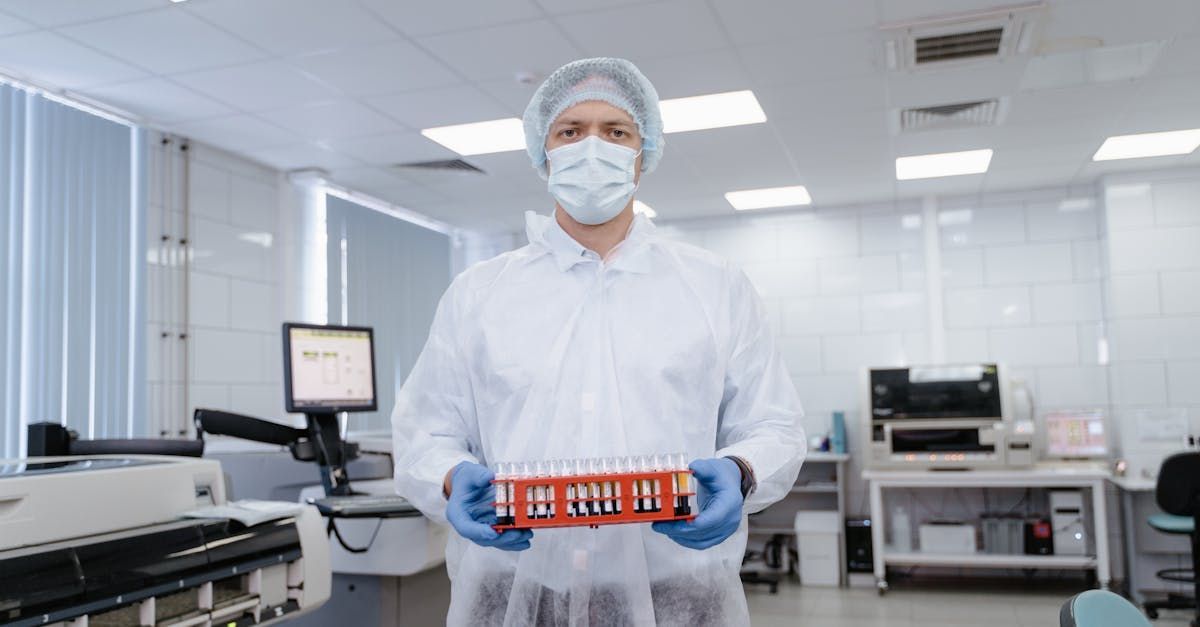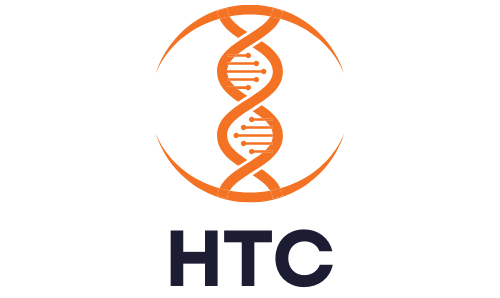HealthTech IPOs: What Investors Need to Know
The HealthTech industry has witnessed remarkable growth over the past decade, revolutionizing the way healthcare is delivered, managed, and experienced. From wearable devices that monitor vital signs in real-time to sophisticated AI-driven diagnostic tools, HealthTech innovations are not only enhancing patient care but also streamlining healthcare operations.
This surge in technological advancements has been fueled by a combination of factors, including an aging population, increased prevalence of chronic diseases, and a growing demand for personalized medicine. As a result, the global HealthTech market is projected to continue its rapid expansion, offering lucrative opportunities for investors.
One of the most significant milestones for any growing HealthTech company is its Initial Public Offering (IPO). Going public allows these companies to raise substantial capital, which can be used to fund further research and development, expand their market reach, and accelerate growth. For investors, IPOs represent a unique opportunity to invest in innovative companies at an early stage, potentially reaping substantial returns as these companies mature and succeed in the market.
This blog aims to provide investors with key insights into the world of HealthTech IPOs. We will explore the factors driving the surge in HealthTech IPOs, the critical considerations investors should keep in mind, the risks and challenges inherent in these investments, and strategies for making informed investment decisions. By understanding these aspects, investors can better navigate the dynamic landscape of HealthTech IPOs and capitalize on the investment potential of this burgeoning sector.
The Rise of HealthTech IPOs
Statistics on the Increase in HealthTech IPOs Over Recent Years
In recent years, the HealthTech sector has experienced a significant uptick in the number of companies going public. According to data from various financial markets, the number of HealthTech IPOs has increased by over 50% in the past five years. In 2023 alone, HealthTech IPOs accounted for nearly 20% of all technology sector IPOs, reflecting the growing investor interest in this field. This surge is not just a fleeting trend but a sustained movement, driven by several key factors reshaping the healthcare landscape.
Factors Driving the Surge in HealthTech IPOs
1. Advancements in Technology: The rapid evolution of technologies such as artificial intelligence (AI), machine learning, big data analytics, and the Internet of Things (IoT) has revolutionized healthcare. These innovations have led to the development of new diagnostic tools, treatment methods, and patient management systems, making HealthTech companies attractive investment opportunities.
2. Increased Healthcare Demand: The global demand for healthcare services has escalated, driven by an aging population, rising prevalence of chronic diseases, and heightened awareness of health and wellness. This increased demand has spurred innovation and investment in HealthTech solutions that can improve patient outcomes and reduce healthcare costs.
3. Regulatory Changes: Favorable regulatory environments have also played a crucial role in the rise of HealthTech IPOs. Governments and regulatory bodies worldwide are increasingly recognizing the potential of HealthTech innovations to enhance healthcare delivery. Streamlined approval processes and supportive policies have encouraged more HealthTech companies to go public.
Notable HealthTech IPOs in Recent Years and Their Market Performance
Several HealthTech companies have made headlines with their successful IPOs, demonstrating strong market performance and investor confidence. Some notable examples include:
Livongo Health (LVGO): Livongo, a pioneer in chronic disease management, went public in July 2019. The company’s stock soared by over 50% on its first day of trading and continued to perform well, culminating in its acquisition by Teladoc Health in 2020 for $18.5 billion. Livongo's success highlighted the potential for digital health platforms to transform chronic care management.
GoodRx (GDRX): GoodRx, a digital platform that helps consumers find affordable prescription medications, launched its IPO in September 2020. The stock jumped by nearly 50% on its debut, reflecting strong investor interest in solutions that address the high cost of prescription drugs in the United States.
Butterfly Network (BFLY): Butterfly Network, known for its handheld, AI-powered ultrasound devices, went public via a special purpose acquisition company (SPAC) merger in February 2021. The company’s innovative technology and significant market potential attracted substantial investor attention, leading to a successful market debut.
Notable Labs: HealthTech IPOs have seen robust investor interest, exemplified by Notable Labs. Known for its innovative precision medicine and oncology approaches, the company uses its Predictive Precision Medicine Platform (PPMP) to guide clinical trials and drug development. This has attracted financial backing and positive attention, underpinning investor confidence and the company's growth prospects.
These examples illustrate the diverse range of HealthTech innovations capturing investor interest and the strong market performance many of these companies have achieved post-IPO. As the HealthTech sector continues to grow, more companies are expected to follow in their footsteps, offering investors ample opportunities to participate in the next wave of healthcare innovation.
Key Factors to Consider Before Investing in HealthTech IPOs
Investing in HealthTech IPOs can be highly rewarding, but it also comes with its own set of challenges and risks. To make informed investment decisions, it’s essential to consider several key factors that can significantly impact the performance and long-term viability of these companies.
Market Potential:
One of the first aspects to evaluate is the target market size and its growth potential. HealthTech companies often address specific niches within the broader healthcare market, such as telemedicine, medical devices, or health data analytics. Assessing the market potential involves understanding the current demand for the company's products or services, projected market growth rates, and the company's ability to capture a significant share of this market. Investors should look for companies operating in rapidly expanding sectors with high unmet needs, as these markets offer the greatest opportunities for growth and profitability.
Innovation and Technology:
The uniqueness and competitiveness of a HealthTech company’s technology are critical factors in its potential for success. Investors should scrutinize the company’s technological innovation, including its patents, proprietary technologies, and research and development capabilities. A company with a strong pipeline of innovative products and a solid intellectual property portfolio is more likely to maintain a competitive edge in the market. Additionally, the scalability and adaptability of the technology should be considered, as these attributes can determine the company's ability to expand its offerings and enter new markets.
Regulatory Landscape:
Healthcare is one of the most heavily regulated industries, and HealthTech companies must navigate a complex and evolving regulatory environment. Understanding the impact of healthcare regulations on a company’s operations and revenue is crucial. Investors should assess the company’s compliance with current regulations and its ability to adapt to potential regulatory changes. This includes evaluating the status of necessary regulatory approvals for the company’s products, the timeline for obtaining these approvals, and any potential hurdles that could delay or prevent market entry.
Financial Health:
Analyzing a HealthTech company’s financial health involves a thorough examination of its financial statements, revenue models, and profitability projections. Key financial metrics to consider include revenue growth, gross margins, operating expenses, and cash flow. Investors should also look at the company’s funding history, including its sources of capital and how it has utilized these funds. A strong balance sheet with sustainable revenue growth and efficient cost management indicates a company’s financial stability and potential for long-term success.
Management Team:
The experience and track record of a HealthTech company’s leadership team are vital indicators of its potential for success. A capable and experienced management team can navigate the complexities of the healthcare market, drive innovation, and execute the company’s strategic vision. Investors should assess the backgrounds of the company’s executives, their previous accomplishments, and their expertise in the HealthTech industry. A strong leadership team with a proven track record of success can significantly increase the likelihood of a positive investment outcome.
By carefully considering these key factors, investors can better assess the potential risks and rewards associated with HealthTech IPOs. A thorough evaluation of market potential, technological innovation, regulatory landscape, financial health, and management team will provide a comprehensive understanding of the company’s prospects, helping investors make well-informed decisions in this dynamic sector.
Risks and Challenges in HealthTech IPOs
While HealthTech IPOs present exciting investment opportunities, they are not without risks and challenges. Investors must be aware of the various factors that can impact the performance of these stocks and prepare for potential obstacles. Here are some of the key risks and challenges to consider:
Market Volatility:
The stock market can be highly volatile, and HealthTech stocks are no exception. Market fluctuations can be driven by a range of factors, including economic conditions, geopolitical events, and investor sentiment. HealthTech companies, particularly those in the early stages of their public journey, can experience significant price swings. Investors should be prepared for this volatility and consider their risk tolerance and investment horizon. It's important to stay informed about market trends and broader economic indicators that could impact HealthTech stocks.
Regulatory Risks:
Navigating the regulatory landscape is one of the most significant challenges for HealthTech companies. The healthcare sector is subject to stringent regulations that can vary by region and change over time. Regulatory approvals are often necessary for new products and technologies, and delays or denials can significantly impact a company's operations and revenue. Additionally, ongoing compliance with healthcare regulations can be costly and time-consuming. Investors need to understand the regulatory requirements relevant to the companies they are considering and evaluate how well these companies are positioned to meet these requirements.
Competitive Landscape:
The HealthTech industry is highly competitive, with numerous companies vying for market share in various niches. Emerging competitors and rapid technological advancements can pose significant risks to established players. A new, innovative technology can quickly disrupt the market, rendering existing solutions obsolete. Investors should assess the competitive landscape and consider how a company differentiates itself from its competitors. This includes evaluating the company's innovation pipeline, intellectual property, and ability to adapt to changing market conditions.
Operational Risks:
Scaling operations, production, and distribution presents another set of challenges for HealthTech companies. Rapid growth can strain a company's resources and infrastructure, leading to operational inefficiencies. Issues such as supply chain disruptions, production delays, and quality control problems can impact a company's ability to deliver its products and services effectively. Additionally, expanding into new markets requires careful planning and execution. Investors should evaluate a company's operational capabilities and its strategies for managing growth and scaling its business.
Case Studies of Successful and Unsuccessful HealthTech IPOs
Examining the experiences of HealthTech companies that have gone public can provide valuable insights into the factors that contribute to their success or failure. By analyzing these case studies, investors can better understand what to look for and avoid when evaluating potential HealthTech IPOs.
Successful IPOs
1. Teladoc Health (TDOC):
Background: Teladoc Health is a leader in telemedicine and virtual healthcare services. The company went public in July 2015.
Performance: Teladoc’s stock price surged after its IPO, reflecting strong investor confidence. The company continued to grow through strategic acquisitions, including the notable acquisition of Livongo Health in 2020.
Success Factors:
- Innovative Business Model: Teladoc’s virtual care platform met a growing demand for remote healthcare services, particularly during the COVID-19 pandemic.
- Strategic Acquisitions: By acquiring complementary businesses, Teladoc expanded its service offerings and market reach.
- Strong Market Demand: The increasing need for accessible healthcare solutions fueled Teladoc’s growth and market adoption.
2. Guardant Health (GH)
Background: Guardant Health, specializing in liquid biopsy technology for cancer detection and monitoring, went public in October 2018.
Performance: The company’s stock performed exceptionally well post-IPO, driven by its innovative approach to cancer diagnostics and a strong pipeline of products.
Success Factors:
- Cutting-Edge Technology: Guardant Health’s liquid biopsy technology offered a less invasive and more efficient alternative to traditional biopsy methods.
- Expanding Market: The rising prevalence of cancer and the need for early detection created a substantial market for Guardant’s products.
- Robust Clinical Data: Strong clinical trial results and endorsements from the medical community bolstered investor confidence.
Unsuccessful IPOs
1. Proteus Digital Health
Background: Proteus Digital Health developed ingestible sensors to track medication adherence. The company planned an IPO but ultimately filed for bankruptcy in 2020.
Performance: Despite initial excitement, the company struggled with scaling its technology and securing regulatory approvals.
Failure Factors:
- Regulatory Challenges: Difficulties in obtaining regulatory approvals for its innovative technology delayed market entry and revenue generation.
- Operational Issues: Scaling the production and distribution of ingestible sensors proved more complex and costly than anticipated.
- Market Adoption: Limited adoption by healthcare providers and patients hindered the company’s growth.
2. SmileDirectClub (SDC)
Background: SmileDirectClub, a direct-to-consumer teeth-straightening company, went public in September 2019.
Performance: The company’s stock price declined significantly post-IPO, and it struggled to achieve profitability.
Failure Factors:
- Competitive Pressure: Intense competition from established orthodontic companies and new entrants eroded SmileDirectClub’s market share.
- Regulatory Scrutiny: Legal and regulatory challenges related to its business model and clinical practices affected investor confidence.
- Customer Complaints: High levels of customer dissatisfaction and negative reviews impacted the company’s reputation and sales.
Lessons Learned
From these case studies, several key lessons emerge:
- Innovation and Market Fit: Companies with truly innovative technologies that address significant market needs tend to perform well. It’s crucial for investors to assess the uniqueness and demand for the company’s products.
- Regulatory Preparedness: Navigating the regulatory landscape is essential. Companies must be well-prepared to meet regulatory requirements and obtain necessary approvals to avoid delays and additional costs.
- Operational Excellence: Successful scaling of operations is vital for sustained growth. Investors should evaluate a company’s operational capabilities and strategies for managing growth.
- Competitive Advantage: A strong competitive position, supported by robust intellectual property and a clear market differentiation, is a key determinant of long-term success.
Strategies for Investing in HealthTech IPOs
Investing in HealthTech IPOs can be highly rewarding, but it requires careful planning and strategic decision-making. Here are some essential strategies to consider when investing in this dynamic sector:
Due Diligence
Thorough research and analysis are critical before investing in any HealthTech IPO. Due diligence involves evaluating several aspects of the company to understand its potential and risks. Key areas to investigate include:
- Business Model: Understand the company’s business model, revenue streams, and how it plans to achieve profitability.
- Market Analysis: Assess the target market size, growth potential, and competitive landscape. Identify the company’s market positioning and its competitive advantages.
- Technology Evaluation: Analyze the company’s technology, including its innovation pipeline, intellectual property, and R&D capabilities. Ensure the technology addresses a significant market need and has a clear path to commercialization.
- Regulatory Landscape: Review the regulatory requirements and approval status for the company’s products. Consider any potential regulatory hurdles that could impact the company’s operations.
- Financial Health: Examine financial statements, revenue models, funding history, and cash flow. Look for sustainable growth and efficient cost management.
- Management Team: Evaluate the experience and track record of the leadership team. A strong management team is often a key indicator of the company’s potential for success.
Diversification
Diversifying your investments is a fundamental strategy to mitigate risk. By spreading investments across multiple HealthTech IPOs and other sectors, you can reduce the impact of any single investment’s poor performance. Diversification allows you to balance potential high-reward investments with more stable and predictable options, thereby protecting your portfolio from significant losses.
Consider investing in HealthTech companies that operate in different niches within the sector, such as telemedicine, medical devices, diagnostics, and health data analytics. This approach ensures that your portfolio benefits from the growth potential of various sub-sectors while minimizing sector-specific risks.
Long-term vs. Short-term Investment
Deciding between a long-term holding strategy and short-term trading depends on your investment goals, risk tolerance, and market conditions.
- Long-term Investment: Holding HealthTech stocks for the long term allows you to benefit from the company’s growth and development over time. This strategy is suitable for investors who believe in the long-term potential of the HealthTech sector and are willing to withstand short-term volatility. Long-term investors should focus on companies with strong fundamentals, a robust pipeline of innovative products, and a clear path to profitability.
- Short-term Trading: Short-term trading involves capitalizing on price fluctuations to generate quick returns. This approach requires active monitoring of market trends, company news, and technical analysis. Short-term traders should be prepared for higher volatility and the potential for rapid gains or losses. This strategy is best suited for experienced investors who can dedicate time and resources to active trading.
Consulting Experts
Seeking advice from financial advisors and industry experts can provide valuable insights and enhance your investment strategy. Experts can offer in-depth analysis, market trends, and professional guidance tailored to your investment goals.
- Financial Advisors: Financial advisors can help you develop a diversified investment portfolio, assess your risk tolerance, and provide personalized investment recommendations. They can also assist in evaluating the financial health and growth potential of HealthTech companies.
- Industry Experts: HealthTech industry experts, such as healthcare professionals, researchers, and technology analysts, can provide specialized knowledge about the sector’s trends, innovations, and regulatory environment. Their insights can help you identify promising investment opportunities and understand the technical aspects of HealthTech companies.
Future Outlook for HealthTech IPOs
As the HealthTech sector continues to evolve, the future of HealthTech IPOs looks promising, driven by ongoing innovation, market demand, and global healthcare trends. Here’s a look at the trends, predictions, emerging technologies, and the potential impact of global healthcare challenges on HealthTech IPOs.
Trends and Predictions for the HealthTech IPO Market
- Increased Volume of IPOs: The HealthTech sector is expected to see a continued increase in the number of IPOs. As more startups reach maturity and seek capital to expand their operations and market reach, the IPO pipeline is likely to remain robust.
- Higher Valuations: With the growing recognition of the value that HealthTech companies bring to the healthcare ecosystem, IPO valuations are expected to rise. Investors are increasingly willing to pay premium prices for shares in companies that demonstrate strong growth potential and innovative solutions.
- Focus on Digital Health: Digital health solutions, including telemedicine, remote monitoring, and health data analytics, will continue to dominate the HealthTech IPO landscape. The COVID-19 pandemic has accelerated the adoption of these technologies, and their continued integration into mainstream healthcare will drive future IPOs.
- Global Expansion: HealthTech companies are likely to pursue IPOs not only in their home countries but also in international markets. This trend will be driven by the desire to access a broader investor base and tap into global capital markets.
Emerging Technologies and Innovations Driving Future IPOs
- Artificial Intelligence (AI) and Machine Learning: AI-driven solutions for diagnostics, treatment planning, and patient management are at the forefront of HealthTech innovation. Companies leveraging AI to enhance healthcare delivery are prime candidates for future IPOs.
- Wearable Health Devices: The market for wearable devices that monitor health metrics in real-time is growing rapidly. Innovations in this space, such as advanced biosensors and personalized health tracking, will likely drive new IPOs.
- Genomics and Personalized Medicine: Advances in genomic sequencing and personalized medicine are revolutionizing how diseases are diagnosed and treated. Companies specializing in these areas, especially those developing targeted therapies and precision medicine, will attract investor interest.
- Telehealth Platforms: The continued expansion and refinement of telehealth platforms will drive IPO activity. Companies that provide comprehensive virtual care solutions, integrating various aspects of patient care, will be well-positioned for successful public offerings.
Potential Impact of Global Healthcare Challenges on HealthTech IPOs
- Pandemic Preparedness and Response: The ongoing threat of global pandemics will keep the focus on HealthTech companies that provide solutions for disease monitoring, outbreak response, and remote patient care. These companies will be attractive to investors seeking to mitigate the risks of future health crises.
- Aging Population: The global aging population presents both challenges and opportunities for HealthTech companies. Solutions that address age-related health issues, such as chronic disease management and elder care technologies, will be in high demand and drive IPO activity.
- Healthcare Accessibility and Affordability: Innovations aimed at making healthcare more accessible and affordable will gain traction. Companies that develop cost-effective diagnostic tools, remote care solutions, and scalable health services will attract significant investor interest.
- Regulatory and Policy Changes: Changes in healthcare regulations and policies, particularly those promoting digital health and innovation, will impact the HealthTech IPO landscape. Companies that are well-aligned with regulatory trends and demonstrate compliance will have a smoother path to going public.
Recap of the key points discussed.
Throughout this blog, we’ve explored the multifaceted landscape of HealthTech IPOs, highlighting their potential and the critical factors that investors should consider. Here’s a quick recap of the key points discussed:
- Introduction: The HealthTech industry is experiencing significant growth, with IPOs playing a crucial role in raising capital for further innovation and expansion.
- The Rise of HealthTech IPOs: A surge in HealthTech IPOs has been driven by technological advancements, increased healthcare demand, and favorable regulatory changes. Notable successful IPOs like Teladoc Health and Guardant Health showcase the sector's potential.
- Key Factors to Consider Before Investing: Investors need to evaluate market potential, technological innovation, regulatory landscape, financial health, and management team to make informed investment decisions.
- Risks and Challenges in HealthTech IPOs: Market volatility, regulatory risks, competitive landscape, and operational challenges are significant factors that can impact the performance of HealthTech IPOs.
- Case Studies of Successful and Unsuccessful HealthTech IPOs: Examples of both successful and struggling HealthTech IPOs provide valuable lessons for investors, emphasizing the importance of innovation, regulatory preparedness, operational excellence, and competitive advantage.
- Strategies for Investing in HealthTech IPOs: Thorough due diligence, diversification, a clear investment strategy (long-term vs. short-term), and consulting experts are essential strategies for navigating HealthTech IPOs.
- Future Outlook for HealthTech IPOs: Emerging technologies, trends, and global healthcare challenges will continue to drive HealthTech IPO activity. Investors should stay informed about these developments to capitalize on new opportunities.
Investing in HealthTech IPOs presents both significant potential and notable risks. The potential lies in the transformative impact of HealthTech innovations on healthcare delivery, patient outcomes, and operational efficiencies. Companies that successfully navigate the regulatory landscape, bring groundbreaking technologies to market, and address pressing healthcare needs can offer substantial returns on investment.
However, the risks associated with HealthTech IPOs cannot be overlooked. Market volatility, regulatory hurdles, intense competition, and operational challenges pose significant threats to the success of these investments. Investors must approach HealthTech IPOs with a clear understanding of these risks and a strategic plan to mitigate them.
In conclusion, HealthTech IPOs represent an exciting frontier in the investment landscape. By staying informed about industry trends, emerging technologies, and market dynamics, investors can make well-informed decisions and identify promising opportunities. It’s essential to conduct thorough research, seek expert advice, and maintain a diversified investment portfolio to balance potential high-reward investments with more stable options.
HealthTech IPOs should be considered as part of a diversified investment strategy, offering exposure to a sector poised for significant growth and innovation. By integrating HealthTech investments with other asset classes, investors can enhance their portfolio’s resilience and capitalize on the transformative potential of the HealthTech industry.
In this rapidly evolving sector, staying informed and making strategic investment choices will enable investors to navigate the complexities of HealthTech IPOs and potentially reap substantial rewards. Embrace the opportunities, understand the risks, and position yourself to benefit from the next wave of healthcare innovation.










